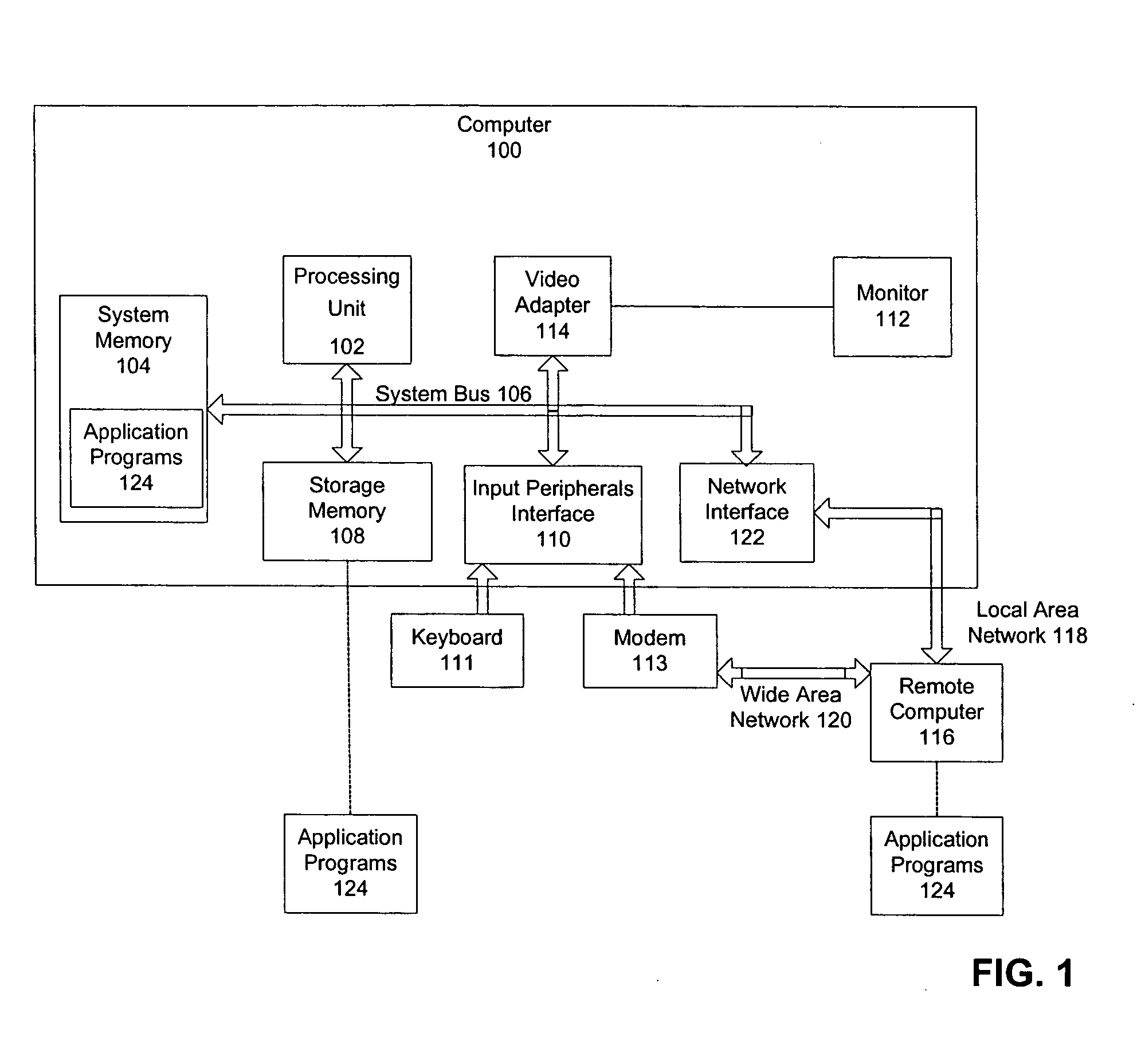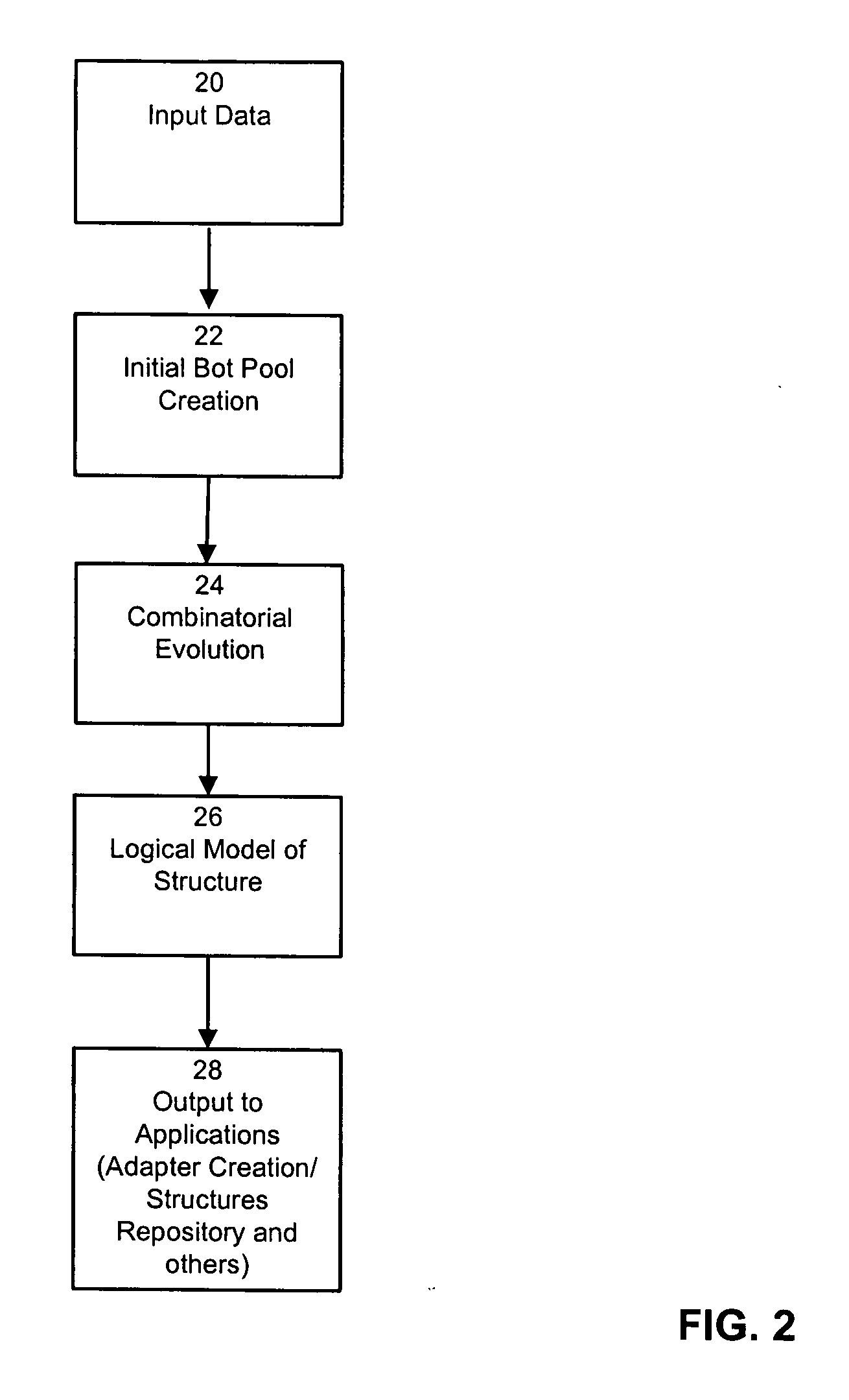The problem therefore, is to automatically create an adapter for a given
stream of unstructured data, based on a corpus of samples from that
stream.
However, it is also an extremely resource consuming approach, as each
data type requires a separate design and
programming effort.
In addition, the type of resources used, it being a development project, are very expensive, as
software designers as well as programmers are needed.
Such an approach also suffers from drawbacks related to its being a bona fide
programming project, such as the need for a serious QA stage for the code written, in addition to the QA required to check the accuracy of the
data structure the initial analysis created.
Due to its extensive
resource consumption, this approach does not scale well when one moves from few syntax formats to hundreds or thousands.
While this methodology reduces the level of expertise needed in order to create an adapter, as well as the
time cycles for creating an adapter, it does not come without a price.
This handicap severely reduces the scope of applicability of this technology, which encompasses mainly relatively simple structures.
In addition, this type of technology is still very intensive with regard to human labor.
Projects become
extremely hard even when involving only hundreds of different structures.
However, it suffers from the same problems described above, since the work of creating an adapter remains labor intensive.
While going a step further towards the goal of
automation of the adapter creation process, “
learning by example” technology is still far from this goal.
While there are problems where explicit definition of the desired solution does not advance a long way towards reaching the optimal solution and the role of the learning or
pattern recognition algorithm is extremely important, the case of analyzing unstructured data and creating an adapter is not of this type.
In all of the prior art solutions, the human user takes the front seat, as all of them are labor intensive.
Such solutions do not scale well when faced with multitudes of formats.
In fact there are certain applications that are outright impossible for a solution that is less than
fully automatic.
Leaving the syntax enumeration and clustering to humans creates a very high barrier when facing a large amount of varying syntaxes.
While there are problems (such as the traveling salesman problem) where the explicit definition of the target function does not cost anything more once the problem has been stated, there are other problems when one cannot oblige a clearly defined target function (sometimes because one cannot be produced—for example, problems involving people where one cannot foresee their actions and needs in a complete form).
In addition, there are problems (like the problem of training a neural network to correctly cluster newsgroups articles) where the labor involved for creating a
training set (in the newsgroup example, the mere provision of a subset of the articles over a certain time period, organized according to their originate grouping) is relatively small compared to the labor involved for solving the problem manually.
Until now, no
algorithm has been proposed that can learn data structures without one of these two elements.
While this result is mathematically rigorous, one can
gain insight into its essence without going into
mathematical equations, if one observes that optimization, learning, and pattern recognition algorithms are all algorithms for solving problems where the space of solutions is so vast that no effective exhaustive
algorithm can be devised.
However, these assumptions, in order to have any effectiveness must not be generic, rather they must be specific to the problem the algorithm implementation tries to solve.
Therefore, the more a certain implementation is optimized for a specific problem, the less it is adequate for problems that vary greatly from the first type of problem.
The second aspect is that due to the
automation of this tedious and cumbersome process, the task of creating tailored adapters become much more scalable, thus enabling abilities and applications that are otherwise out of reach.
In certain applications this
advantage becomes extremely significant, as the task of identifying with certainty the exact number of structures as well as connecting each element to its exact structure can become very resource consuming.
 Login to View More
Login to View More  Login to View More
Login to View More 


